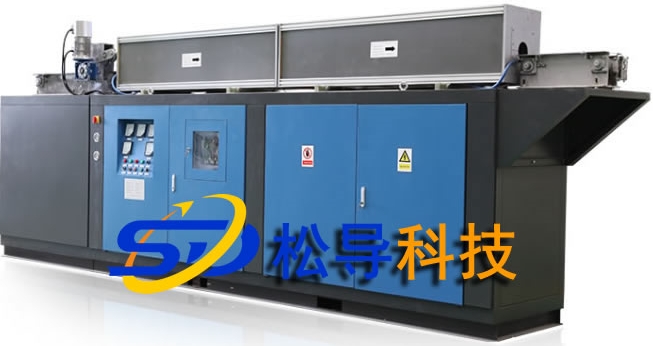- 27
- Mar
What failures are prone to occur in induction heating furnaces for forging
What failures are prone to occur in induction heating furnaces for forging
1 The induction heating furnace for forging is operating normally, but near a certain point in the high voltage zone, the induction heating furnace for forging is unstable, the DC voltmeter is shaking, and the induction heating furnace for forging is accompanied by a squeaking sound
Reason: The parts ignite under high pressure.
2. The induction heating furnace for forging operates normally, but from time to time a sharp beep and beep sound can be heard, and the DC voltmeter swings slightly.
Reason: Poor insulation between transformer turns.
3. The induction heating furnace for forging works normally, but the power cannot be increased
Reason: The power does not go up, indicating that the parameters of the induction heating furnace for forging are not adjusted properly.
4. The induction heating furnace for forging is operating normally, but when the power is raised or lowered in a certain power section, the induction heating furnace for forging has abnormal sound and jitter, and the electric instrument indicates swing
Reason: This kind of failure usually occurs on the power given potentiometer. A certain section of the power given potentiometer is not smooth and jumps, which causes the instability of the induction heating furnace for forging. In severe cases, the inverter will be overturned and the thyristor will be burned.
5. The induction heating furnace for forging is operating normally, but the bypass reactor is heated and burned
Reason: There is asymmetrical operation of the inverter circuit. The main reason for the asymmetrical operation of the inverter circuit comes from the signal circuit; the quality of the bypass reactor itself is not good.
6. The induction heating furnace for forging is operating normally and often breaks down the compensation capacitor
Reasons: poor cooling, capacitor breakdown; insufficient capacitor configuration; medium frequency voltage and operating frequency are too high; in the capacitor boost circuit, the capacitance difference between series capacitors and parallel capacitors is too large, resulting in uneven voltage and capacitor breakdown.

